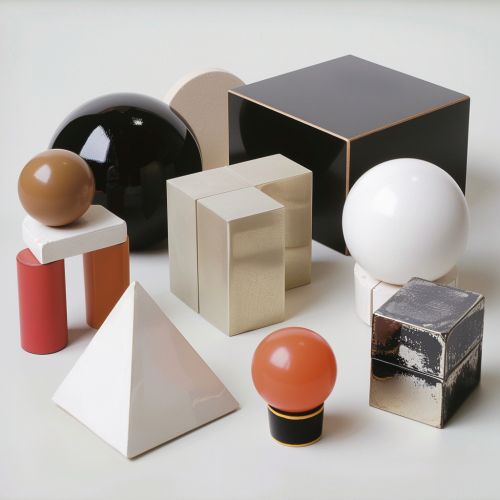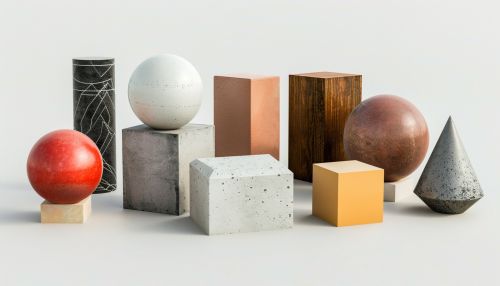Surface Area
Definition and Basics
In the study of geometry, the surface area of a three-dimensional object is a measure of the total area that the surface of the object occupies. It is often represented by the symbol 'A'. Surface area is calculated in square units, such as square inches (in²), square feet (ft²), square meters (m²), and so on.
Calculation of Surface Area
The calculation of surface area depends on the shape of the object. For simple geometric shapes, formulas exist to calculate the surface area directly. For more complex shapes, the surface area can often be calculated by decomposing the shape into simpler ones.
Surface Area of a Cube
A cube is a three-dimensional shape with six equal square faces. The surface area of a cube can be calculated using the formula:
A = 6s²
where 's' is the length of a side of the cube.
Surface Area of a Rectangular Prism
A rectangular prism (also known as a cuboid) is a three-dimensional shape with six faces that are rectangles. The surface area of a rectangular prism can be calculated using the formula:
A = 2lw + 2lh + 2wh
where 'l' is the length, 'w' is the width, and 'h' is the height of the prism.
Surface Area of a Cylinder
A cylinder is a three-dimensional shape with two circular faces and one curved surface. The surface area of a cylinder can be calculated using the formula:
A = 2πr² + 2πrh
where 'r' is the radius of the base of the cylinder and 'h' is the height of the cylinder.
Surface Area of a Sphere
A sphere is a perfectly round three-dimensional shape. The surface area of a sphere can be calculated using the formula:
A = 4πr²
where 'r' is the radius of the sphere.
Surface Area of a Cone
A cone is a three-dimensional shape with a circular base and a pointed top. The surface area of a cone can be calculated using the formula:
A = πr(r + l)
where 'r' is the radius of the base of the cone and 'l' is the slant height of the cone.
Applications of Surface Area
Surface area has numerous applications in various fields, including but not limited to:
- Physics: In physics, surface area plays a crucial role in phenomena such as friction, pressure, and heat transfer.
- Chemistry: In chemistry, the surface area of a substance can affect its reaction rate. For example, finely ground substances have a larger surface area and therefore react more quickly than larger pieces of the same substance.
- Biology: In biology, the surface area of cells and organisms has implications for functions such as nutrient uptake and heat regulation.
- Engineering: In engineering, the surface area of structures and components can affect their strength, durability, and efficiency.
- Architecture: In architecture, the surface area of a building can affect its energy efficiency and aesthetic appeal.


See Also
- Volume - Area - Perimeter - Geometry - Mathematics
